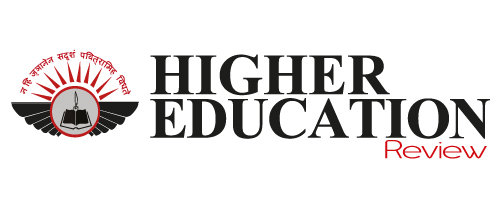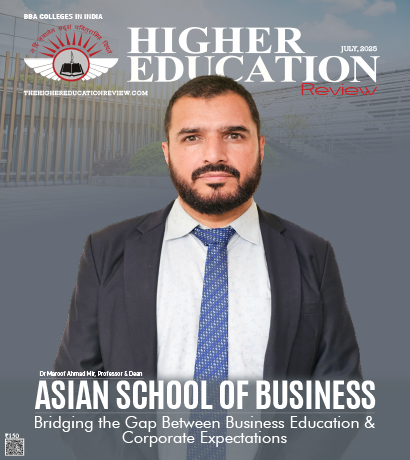The Skills Test Dilemma: Are They Building Bridges or Widening Chasms in the Labor Market?
 The global economy is in a constant state of flux, driven by technological advancements and evolving market demands. This dynamism has exacerbated a persistent challenge: the skills gap. As businesses grapple with a scarcity of qualified talent, skills tests have emerged as a seemingly intuitive solution. But are these assessment methodologies truly effective in identifying and addressing labor market needs, or do they inadvertently contribute to the problem, widening the very gap they aim to bridge? To find the answer to this question, we turned to the experts at testizer.com, a global platform offering a variety of skills tests, from language to computer skills.
The global economy is in a constant state of flux, driven by technological advancements and evolving market demands. This dynamism has exacerbated a persistent challenge: the skills gap. As businesses grapple with a scarcity of qualified talent, skills tests have emerged as a seemingly intuitive solution. But are these assessment methodologies truly effective in identifying and addressing labor market needs, or do they inadvertently contribute to the problem, widening the very gap they aim to bridge? To find the answer to this question, we turned to the experts at testizer.com, a global platform offering a variety of skills tests, from language to computer skills.
The Promise of Skills-Based Hiring: A Beacon of Efficiency?
The proponents of skills tests champion their ability to offer an objective, data-driven approach to talent acquisition and development. In an increasingly skills-based economy, where credentials alone often fail to capture an individual's true capabilities, these assessments aim to go beyond resumes and traditional interviews.
Key advantages include:
- Enhanced Accuracy and Reduced Bias: By evaluating practical abilities and knowledge, skills tests can reduce unconscious bias inherent in subjective hiring processes. This objective measurement promises a more level playing field, fostering diversity and inclusivity.
- Improved Job Matching and Reduced Turnover: When candidates are assessed on the specific skills required for a role, the likelihood of a successful match increases. This leads to higher job satisfaction, improved productivity, and lower turnover rates, saving companies significant time and resources.
- Targeted Training and Development: For existing employees, skills assessments provide invaluable insights into individual and organizational skill gaps. This data empowers Learning & Development (L&D) teams to design tailored training programs, ensuring that investments in upskilling and reskilling are strategic and impactful.
- Adaptability to Evolving Needs: In a rapidly changing landscape, modern skills assessment tools can quickly incorporate new skill sets and adapt to emerging industry demands, ensuring that evaluations remain relevant.
Indeed, the adoption of skills-based hiring is soaring. Reports indicate that a significant majority of employers are now utilizing some form of skills-based assessment, with many observing improved diversity, retention, and reduced mis-hire rates. Candidates, particularly the younger workforce, are also showing a strong preference for skills-based processes, viewing them as a fairer way to showcase their abilities.
The Shadow Side: When Tests Fall Short
Despite the compelling arguments for their utility, skills testing methodologies are not without their critics. When poorly designed or misapplied, they can inadvertently contribute to the very skills gap they aim to solve.
Potential pitfalls and criticisms include:
- Irrelevance and Outdated Assessments: The rapid pace of technological change means that skills deemed essential today might be obsolete tomorrow. If assessment methodologies fail to keep pace with these shifts, they risk evaluating candidates on outdated or irrelevant competencies, leading to misaligned hiring and training efforts.
- Bias in Design and Interpretation: While aiming for objectivity, skills tests can still embed cultural or socioeconomic biases in their design. Scenarios and questions might inadvertently favor certain backgrounds or learning styles, disadvantaging otherwise competent candidates. Subjectivity in scoring, even with standardized tests, can also be a concern.
- Focus on Measurable over Meaningful: There's a risk that the drive for quantifiable results can lead to an overemphasis on easily measurable technical skills, potentially overlooking crucial "soft skills" like critical thinking, adaptability, creativity, and emotional intelligence, which are increasingly vital for success in complex work environments.
- Limited Scope and Contextual Blindness: A single test, or even a battery of tests, might not fully capture an individual's holistic capabilities or their ability to apply skills in real-world, dynamic contexts. This can lead to overlooking individuals with strong transferable skills or those who learn best through practical application rather than theoretical assessment.
- "Screening Out" vs. "Screening In": If skills tests are primarily used as a gatekeeping mechanism to "screen out" candidates based on rigid criteria, they can unnecessarily narrow the talent pool, excluding individuals who, with a bit of targeted development, could excel.
- Cost and Time Investment: Developing and implementing robust, up-to-date skills assessment programs can be a significant investment for organizations, particularly smaller businesses. Concerns about adding an extra step to the hiring process can also deter some employers.
Bridging the Gap: A Path Forward
The true potential of skills tests lies not in their mere existence, but in their intelligent and adaptive application. To truly bridge the skills gap, rather than widen it, organizations must embrace a more nuanced and forward-thinking approach:
- Dynamic Alignment with Labor Market Needs: Regularly audit and update skills assessments to reflect the current and anticipated demands of the labor market. Collaborate with industry experts, educational institutions, and internal stakeholders to identify emerging skill requirements.
- Holistic Assessment Strategies: Move beyond a singular focus on technical skills. Integrate assessments that evaluate soft skills, problem-solving abilities, cultural fit, and learning agility. Consider multi-measure testing, combining various assessment types for a more comprehensive view.
- Contextual and Real-World Scenarios: Design assessments that simulate real job tasks and challenges, providing a more accurate measure of practical proficiency and how candidates apply their skills in relevant contexts.
- Bias Mitigation and Fairness: Implement rigorous processes to identify and eliminate bias in test design, administration, and scoring. Ensure cultural sensitivity and provide accommodations for diverse learning styles.
- Focus on Potential and Development: Utilize skills assessments not just for selection, but also as a diagnostic tool for identifying developmental needs. Embrace a "screen-in" philosophy, looking for potential and a willingness to learn, rather than simply filtering out those who don't perfectly match predefined criteria.
- Continuous Feedback and Improvement: Regularly analyze assessment data to identify areas where tests might be ineffective or where training initiatives need refinement. Collect feedback from candidates and hiring managers to ensure the process is fair, efficient, and predictive of success.
- Integration with Learning and Development: Link assessment outcomes directly to personalized learning pathways and training programs. This creates a virtuous cycle where identified gaps are actively addressed, fostering a culture of continuous learning and growth.
In conclusion, skills tests possess immense power to reshape the hiring landscape and tackle the pervasive skills gap. However, their effectiveness hinges on a commitment to continuous improvement, a keen awareness of their limitations, and a strategic vision that prioritizes human potential and adaptability above all else. When wielded thoughtfully, skills tests can indeed be powerful bridges, connecting talent with opportunity and propelling organizations and individuals alike towards a more skilled and prosperous future.
FAQs
1. What's the difference between hard and soft skills, and which are more important in skills testing?
Hard skills are specific, teachable abilities (e.g., coding, data analysis). Soft skills are interpersonal attributes like communication and problem-solving. While hard skills are crucial, soft skills are increasingly vital for success in today's collaborative workplaces. The best approach is to assess a balanced mix of both, tailored to the role.
2. Are skills tests more effective in certain industries or job functions?
Yes, skills tests are highly effective in roles requiring measurable technical proficiencies like IT, engineering, trades, and customer service. They can be less straightforward for highly creative or strategic roles, though even there, assessments for critical thinking or communication can be valuable.
3. How can companies ensure their skills tests are fair and unbiased?
To ensure fairness, companies should:
- Involve diverse teams in test design.
- Use standardized, transparent processes.
- Focus on job relevance for all questions.
- Employ multiple assessment methods.
- Conduct pilot testing and data analysis to identify bias.
- Provide accessibility and accommodations.
- Regularly review and update tests.
4. What role does AI play in skills testing, and what are its pros and cons?
AI can automate scoring, offer adaptive testing, and provide predictive analytics for efficiency and scalability. However, AI also carries risks: algorithmic bias (if trained on biased data), a potential lack of explainability, difficulty assessing nuanced soft skills, and privacy concerns.
5. Beyond testing, what other strategies can organizations use to address the skills gap?
Beyond testing, organizations should:
- Invest in internal training and development.
- Offer apprenticeships and internships.
- Collaborate with educational institutions.
- Foster a continuous learning culture.
- Promote skills-based talent mobility within the company.
- Integrate contingent workers for specialized needs.
- Proactively forecast future workforce requirements.

